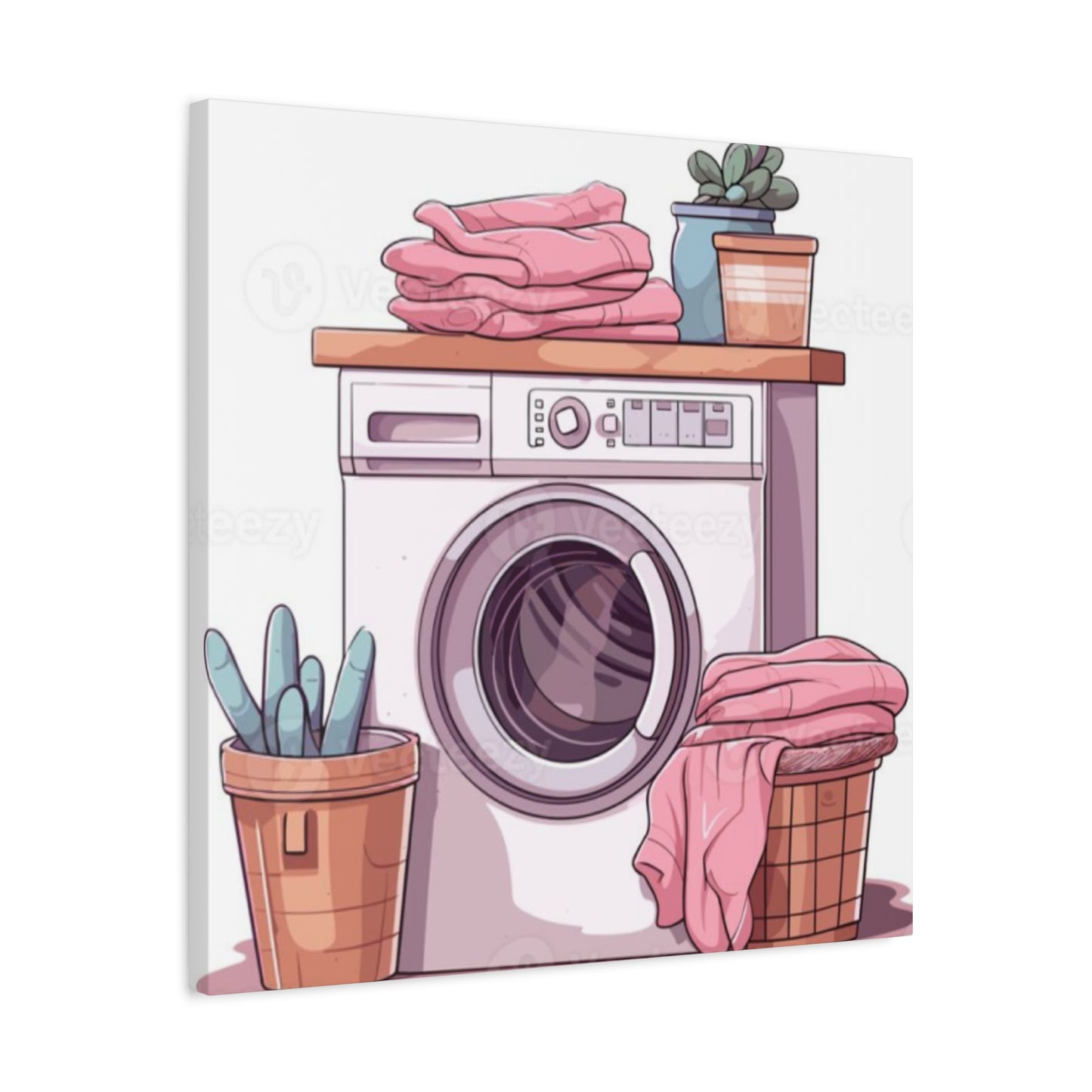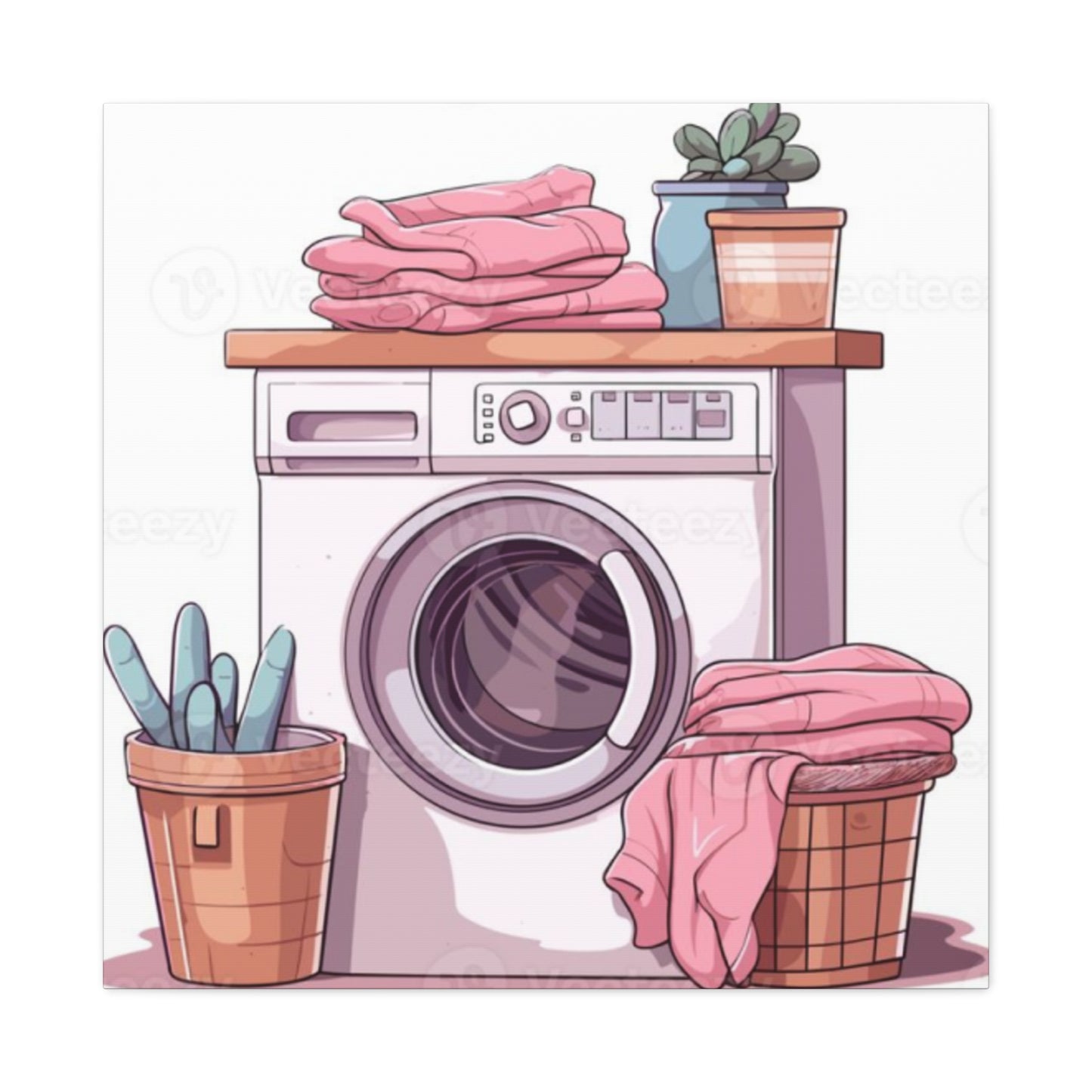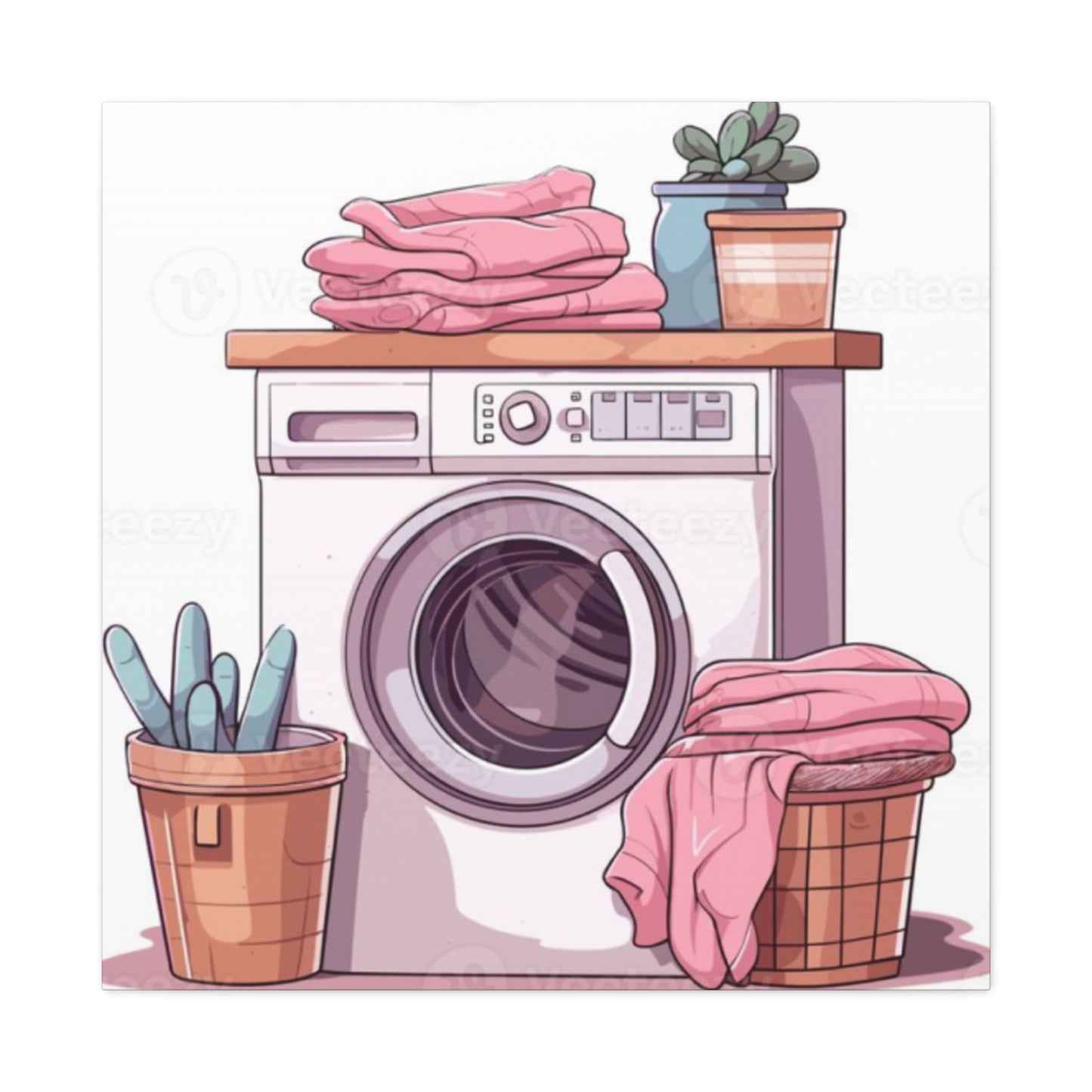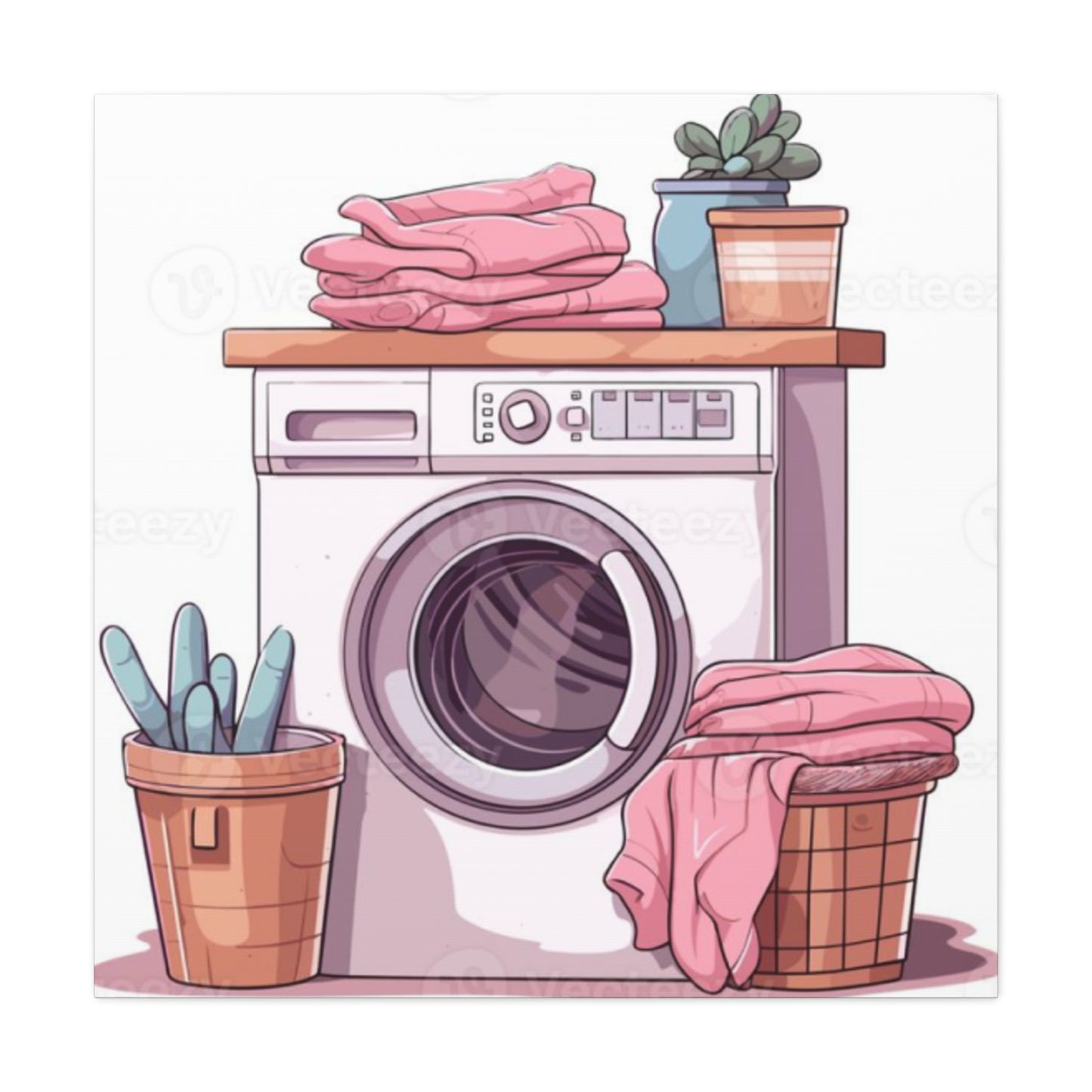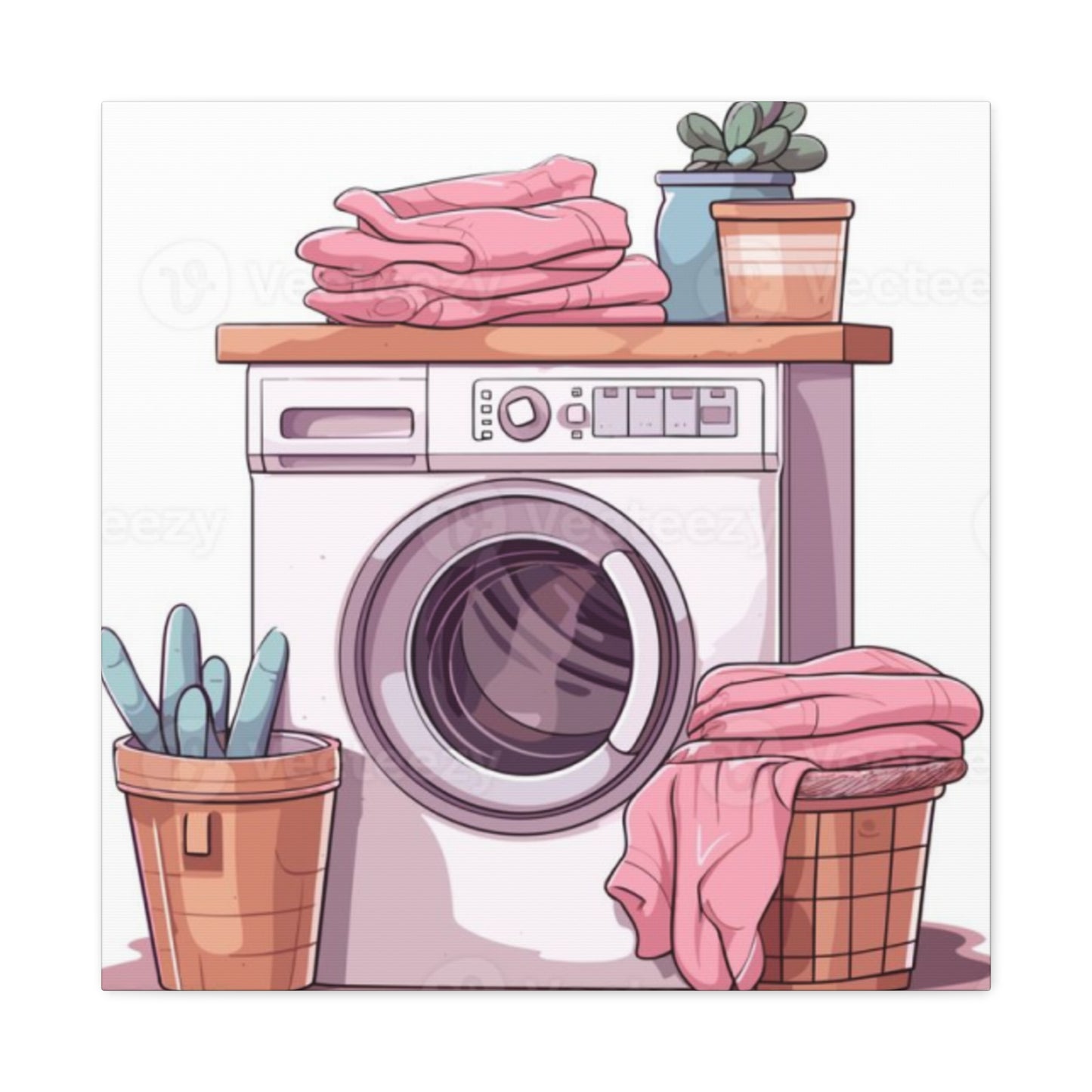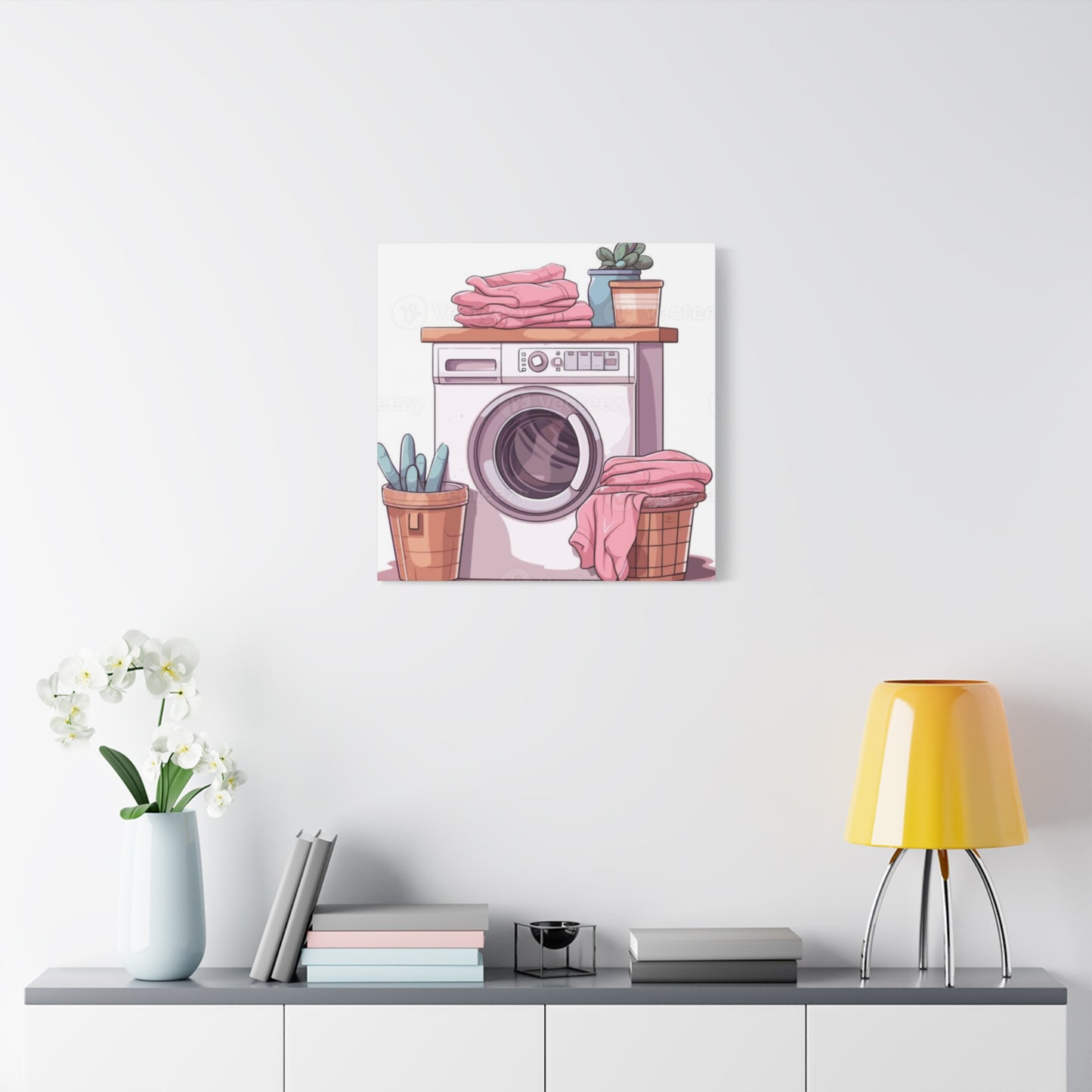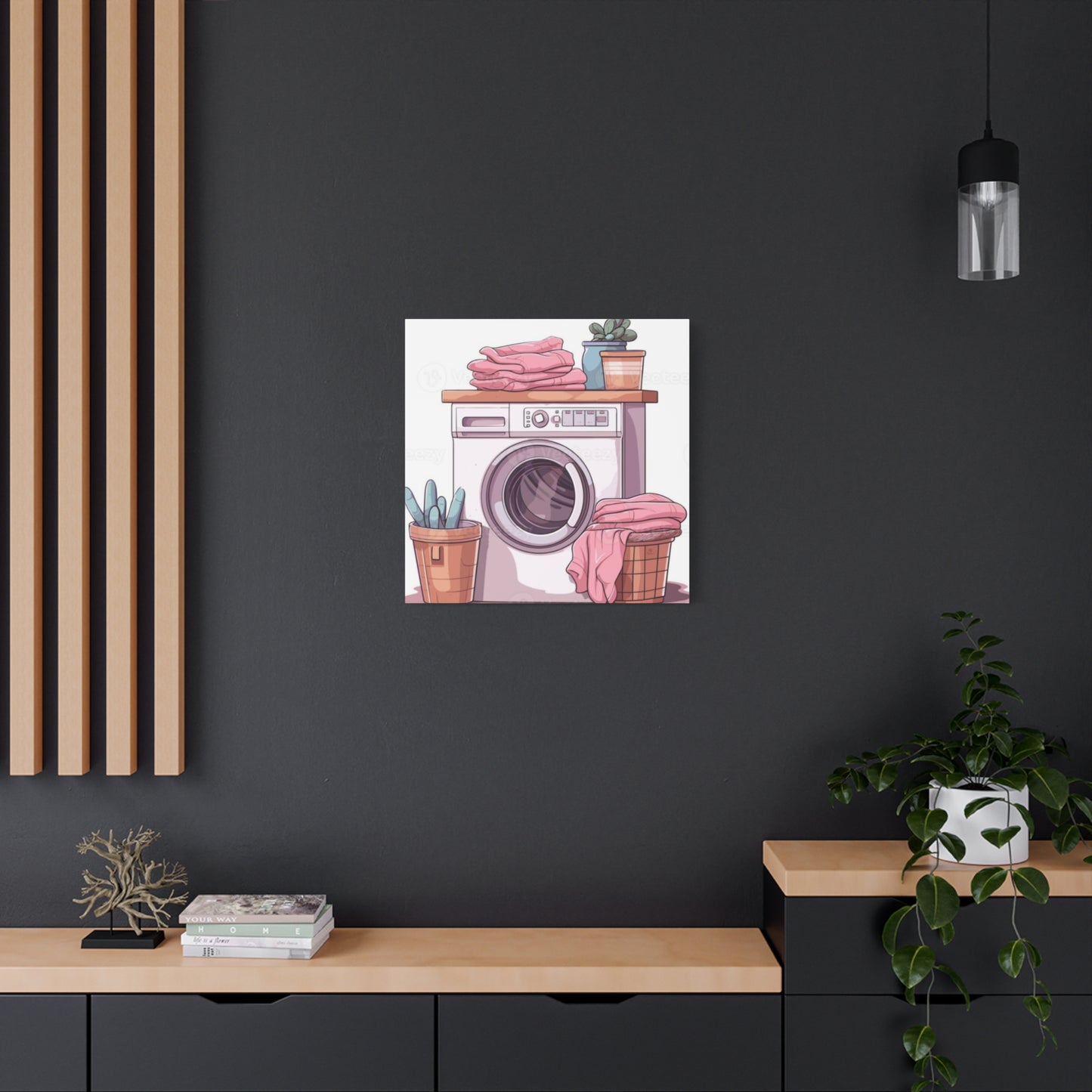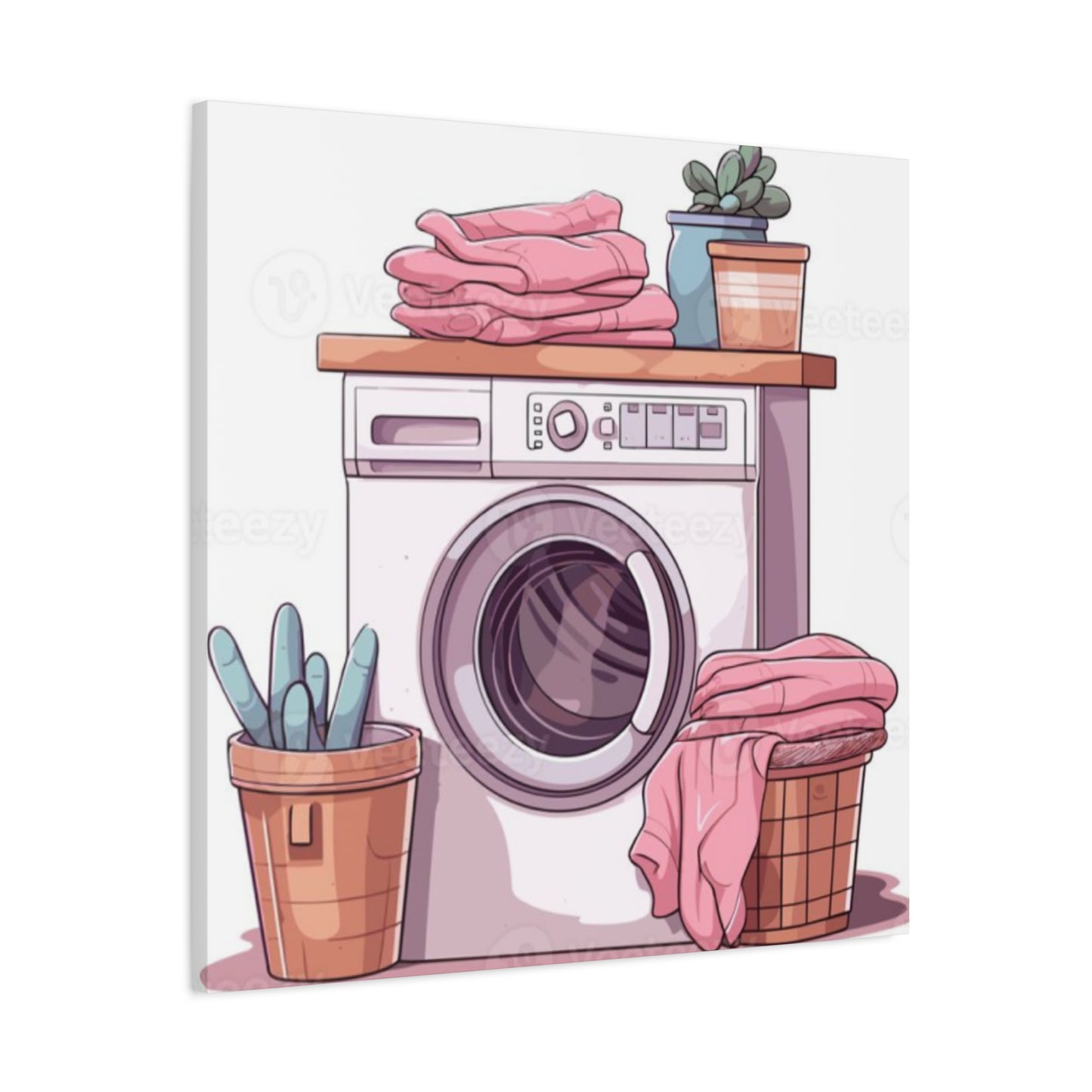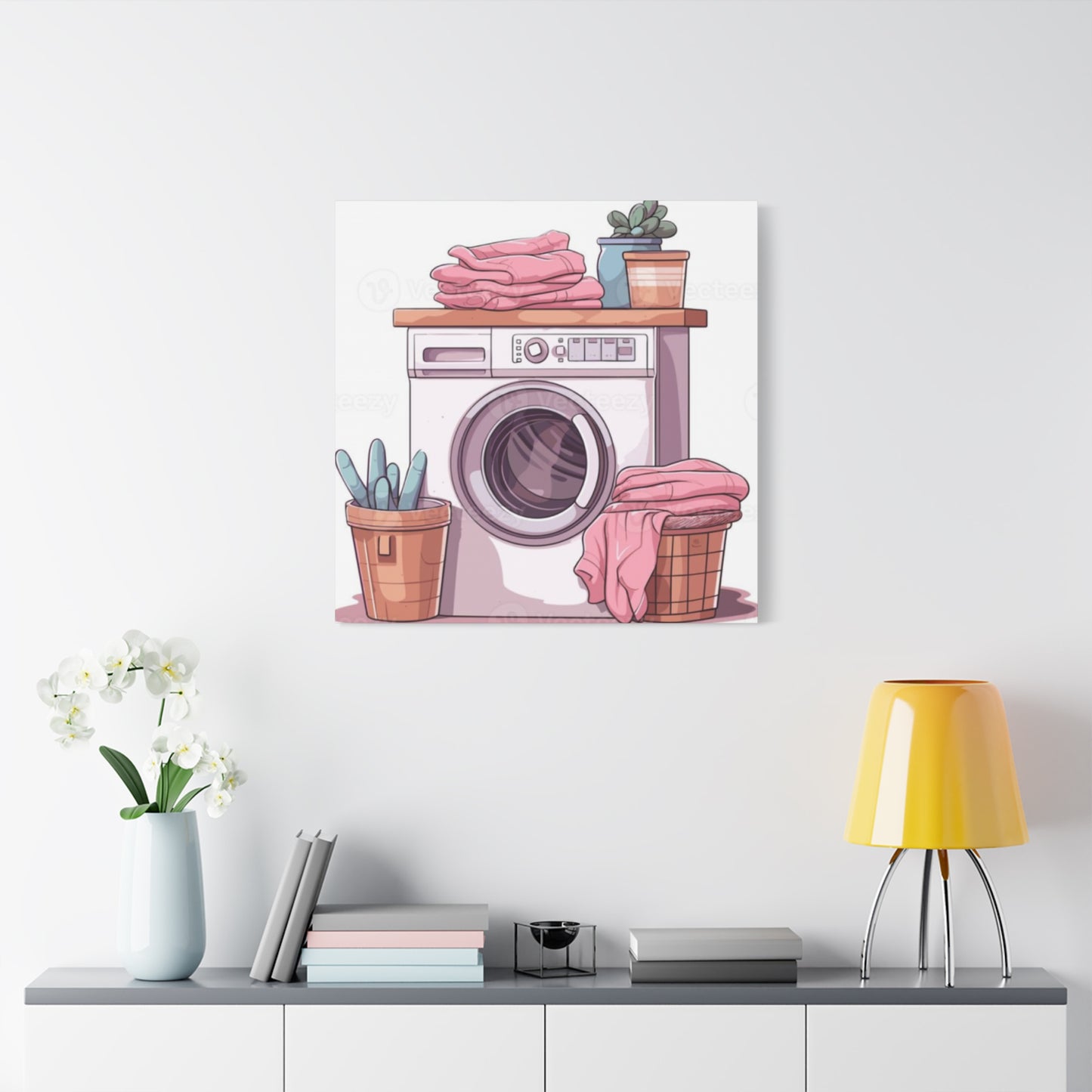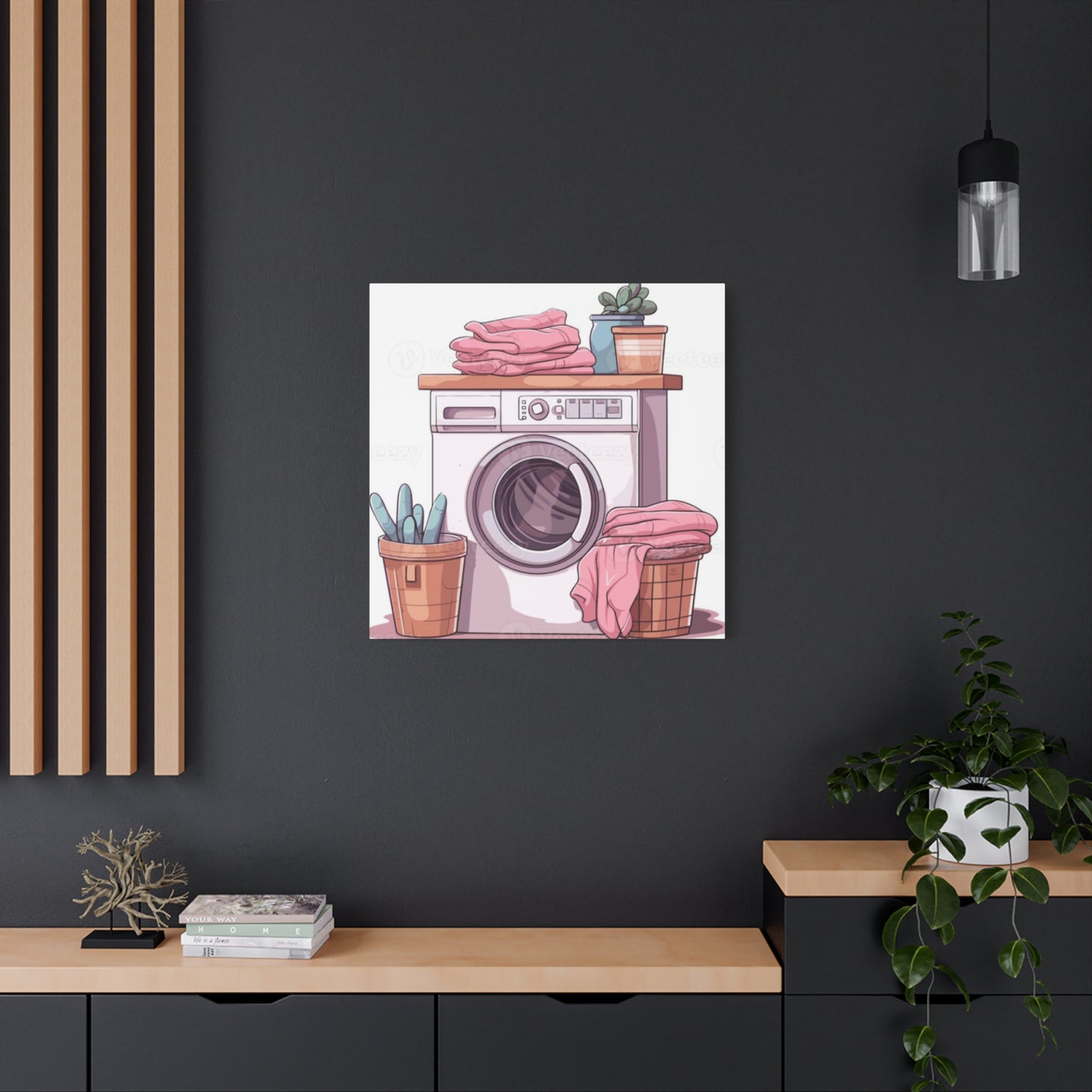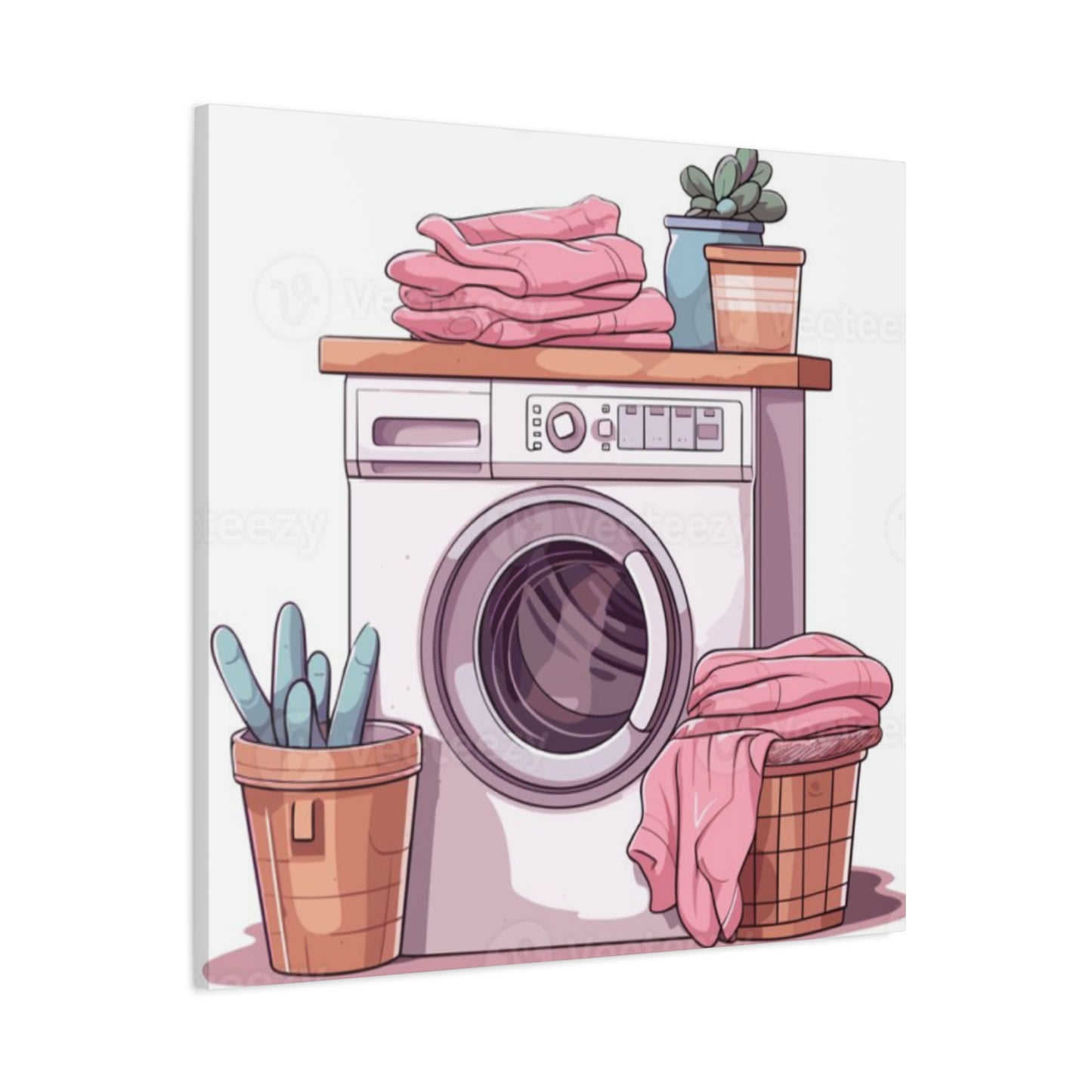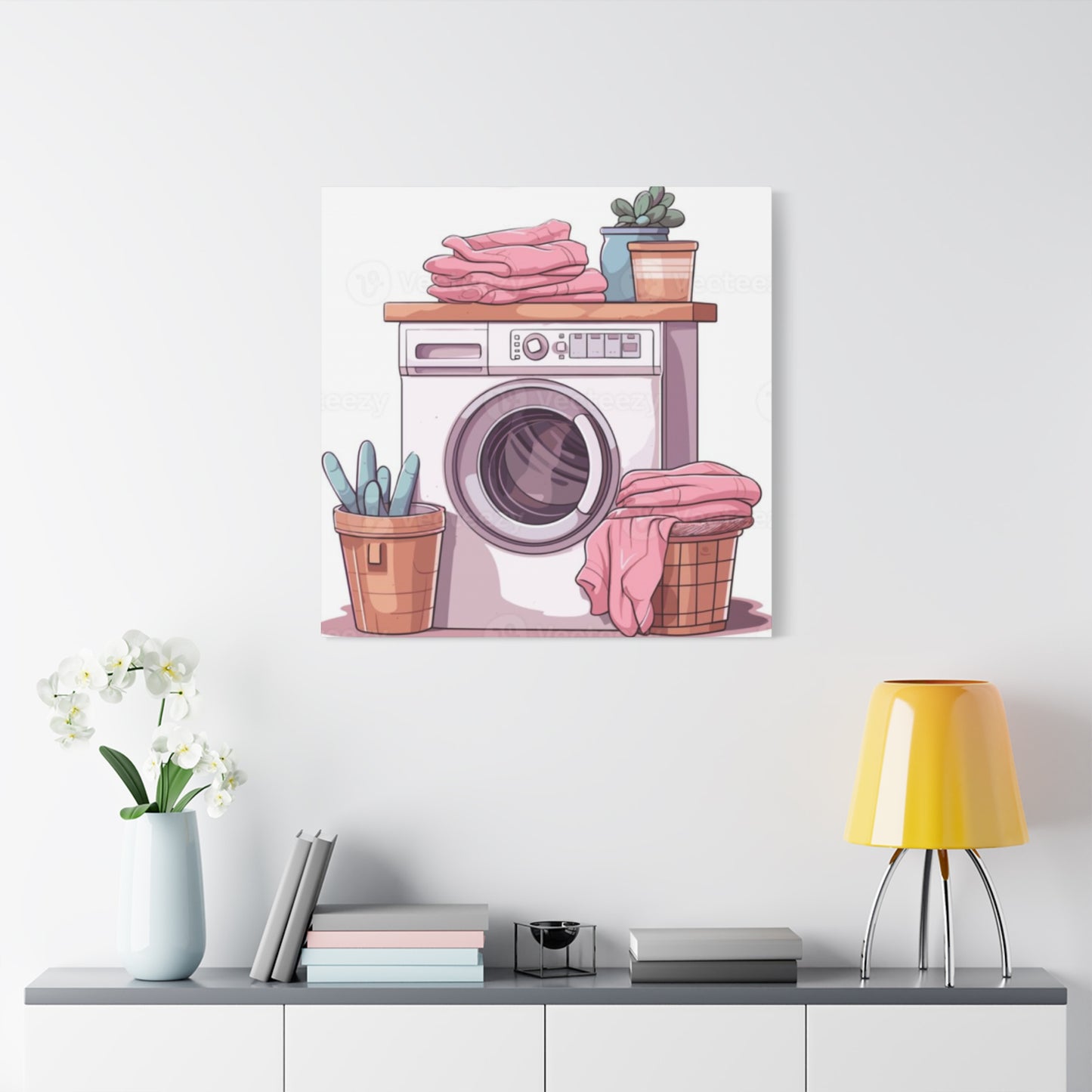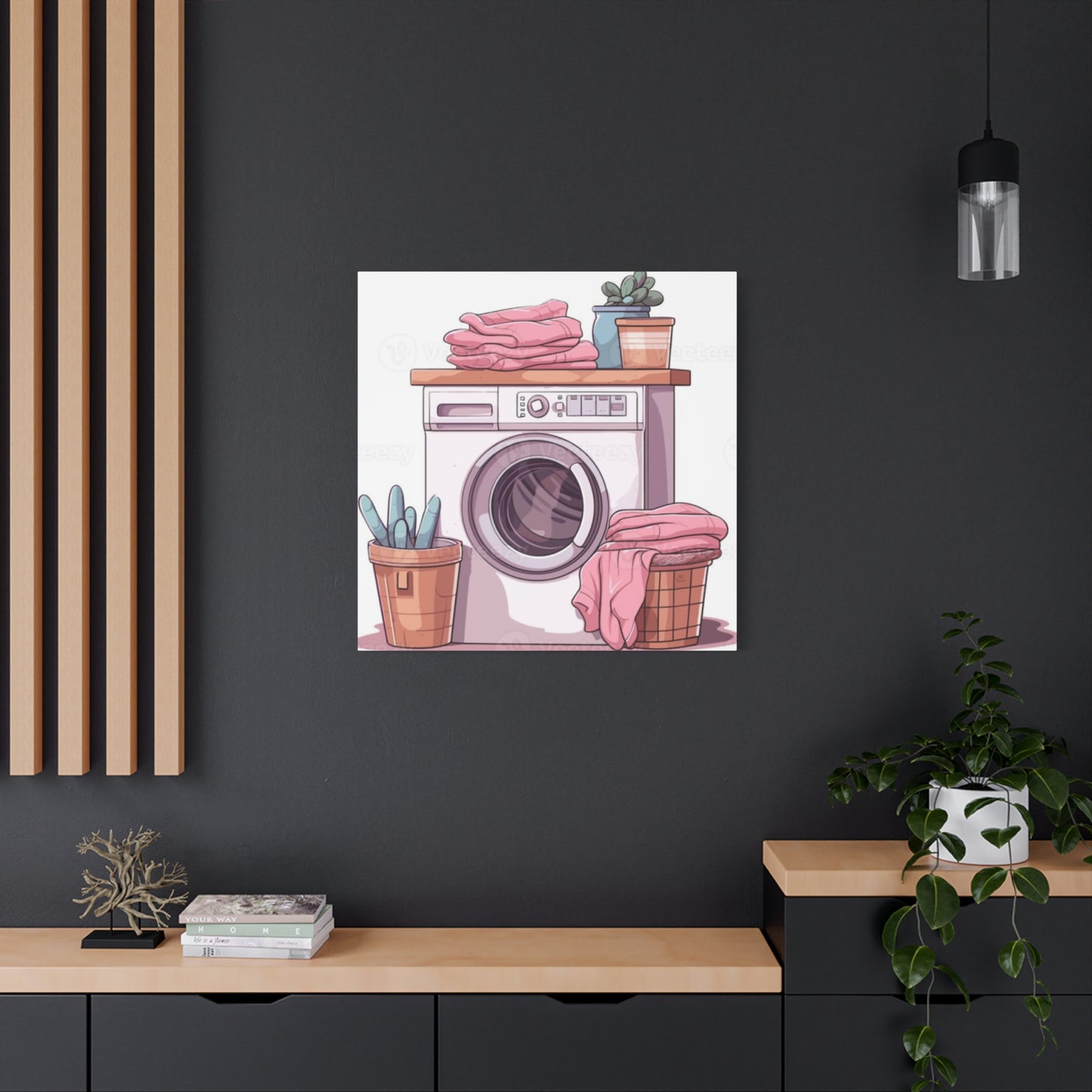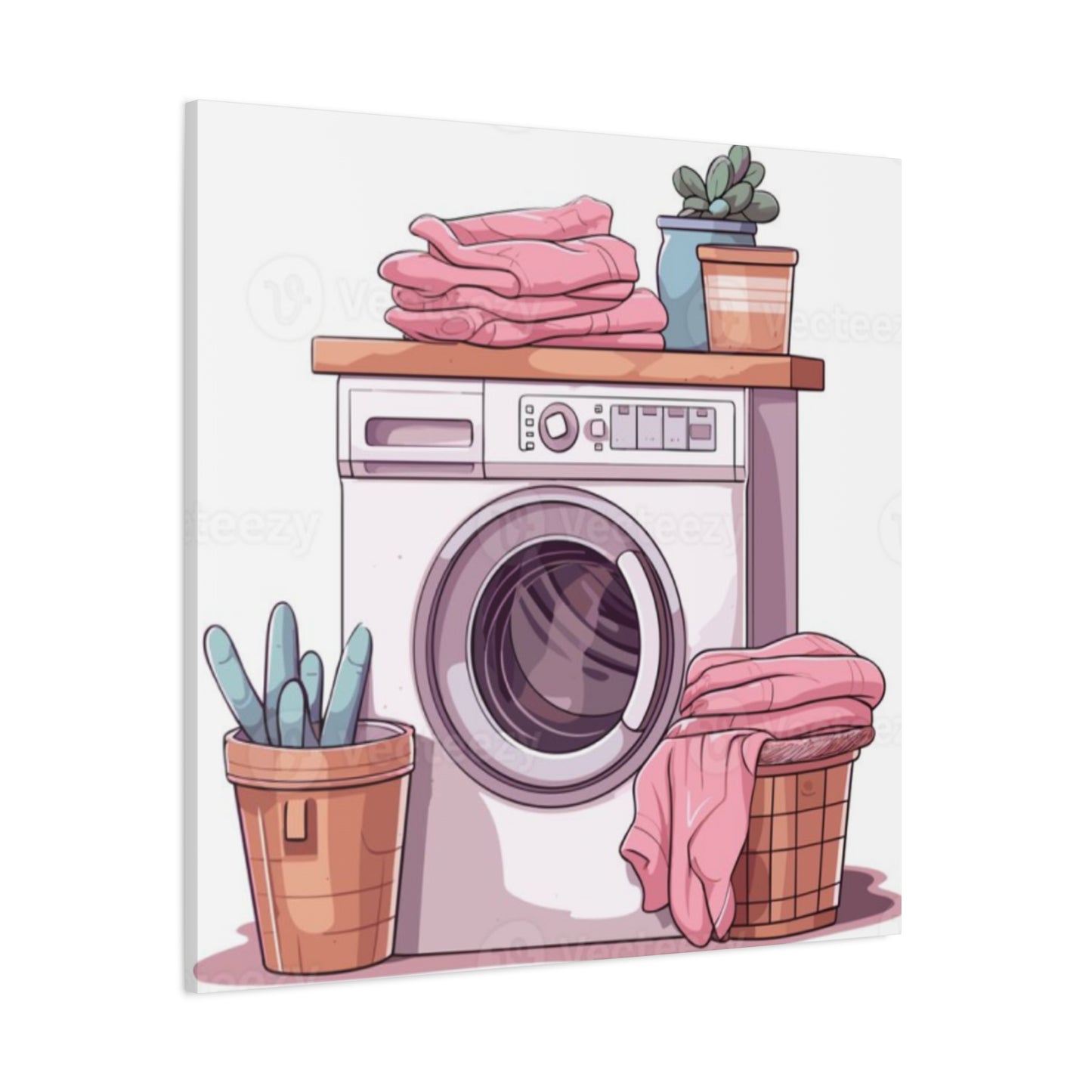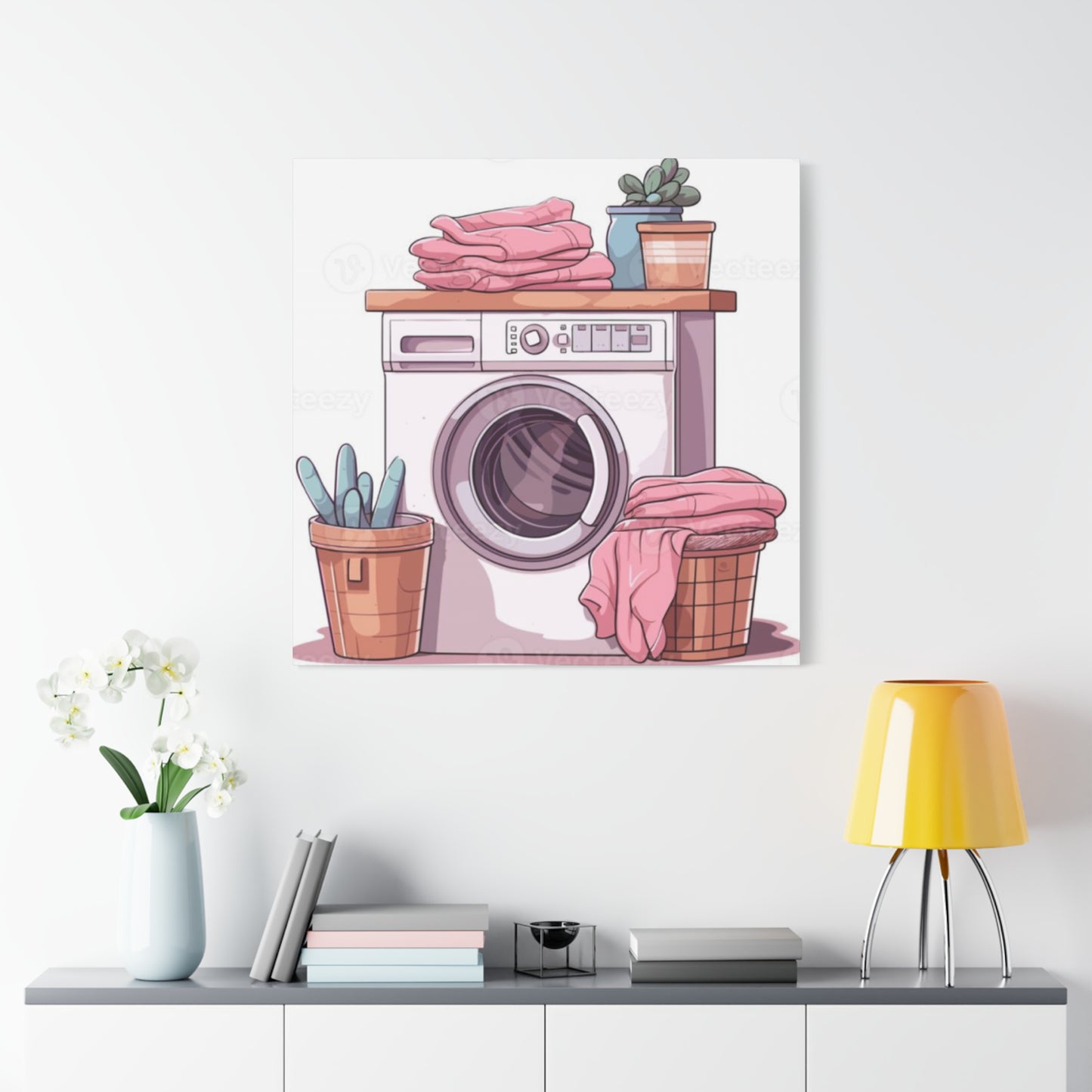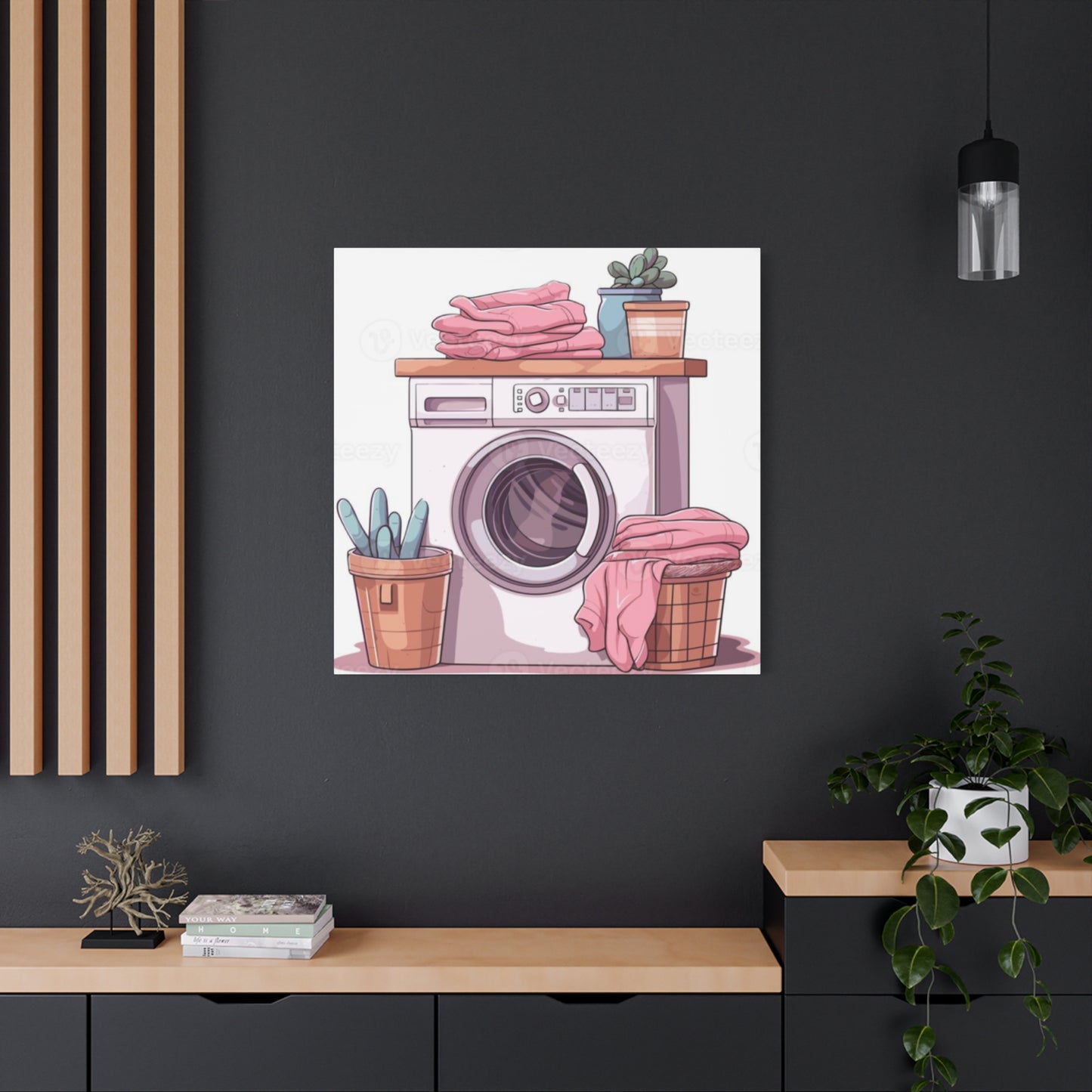Vibrant Ideas to Revolutionize Your Laundry Room Wall Art Experience
The laundry room often gets overlooked when it comes to home decoration, yet it's a location where many homeowners spend considerable time weekly. Transforming this utilitarian area into an inspiring and cheerful environment can completely change your perspective on household chores. Colorful wall art serves as the perfect solution to breathe life into these typically mundane locations, creating an atmosphere that makes laundry tasks feel less like work and more like an enjoyable part of your daily routine.
When selecting artwork for laundry areas, the key lies in choosing pieces that combine functionality with aesthetic appeal. The right combination of vibrant colors, motivational messages, and playful designs can turn even the smallest utility room into a delightful retreat. Whether you prefer bold abstract patterns, whimsical illustrations, or inspiring typography, there's a perfect piece of wall art waiting to enhance your laundry experience.
Creating an Energetic Atmosphere with Canvas Prints
Canvas prints offer durability and visual impact that makes them ideal for laundry environments. These versatile decorative elements can withstand humidity and temperature fluctuations while maintaining their vibrant appearance. The texture of canvas adds depth to artwork, creating visual interest that draws attention and elevates the overall ambiance of the room.
Popular canvas print themes for laundry areas include abstract geometric patterns in bright blues, greens, and yellows that evoke feelings of cleanliness and freshness. Botanical prints featuring colorful flowers or tropical leaves can bring natural beauty indoors, creating a connection with nature that makes mundane tasks feel more pleasant. Typography-based canvas prints with humorous laundry-related quotes or motivational sayings add personality while serving as daily reminders to maintain a positive attitude toward household responsibilities.
The size and placement of canvas prints significantly impact their effectiveness in enhancing room aesthetics. Large statement pieces work well above washing machines or dryers, creating focal points that command attention. Smaller canvas prints can be grouped together to form gallery walls, allowing for creative arrangements that reflect personal style preferences. Consider the viewing angles when positioning artwork, ensuring that pieces remain visible and impactful from various positions within the room.
Color coordination between canvas prints and existing room elements creates cohesive design schemes that feel intentional and polished. Warm colors like oranges, reds, and yellows create energetic atmospheres that can make early morning or late evening laundry sessions feel more invigorating. Cool colors such as blues, greens, and purples promote feelings of calm and relaxation, which can be particularly beneficial for those who find laundry tasks stressful or overwhelming.
Poster Prints That Add Personality and Charm
Poster prints provide affordable options for frequently updating laundry room aesthetics without significant financial investment. These lightweight decorative elements can be easily swapped out seasonally or whenever inspiration strikes, allowing for continuous evolution of room character. High-quality poster prints resist fading and maintain crisp colors even in environments with varying moisture levels.
Vintage-inspired poster designs featuring retro laundry advertisements or mid-century modern graphics create nostalgic atmospheres that celebrate the history of domestic life. These pieces often incorporate bold typography and simplified color palettes that complement both traditional and contemporary room designs. Modern poster prints might feature minimalist designs with clean lines and contemporary color schemes that align with current home decoration trends.
Humorous poster prints can inject levity into daily routines, featuring witty sayings about laundry, household management, or family life. These pieces serve dual purposes as conversation starters and mood enhancers, helping to maintain positive attitudes during routine tasks. Educational posters displaying laundry care symbols or stain removal tips combine functionality with decoration, providing useful reference information while contributing to room aesthetics.
The framing of poster prints significantly influences their perceived value and integration with room design. Simple frames in coordinating colors help prints appear more finished and intentional. Matting can add visual weight to smaller prints, making them appear more substantial and worthy of attention. Consider using frames with protective glass or acrylic to prevent moisture damage and extend the lifespan of paper-based artwork.
Bold Color Schemes That Transform Mundane Tasks
Color psychology plays a crucial role in creating environments that support positive emotional responses to daily activities. Bright, saturated colors stimulate energy and enthusiasm, making them excellent choices for areas where motivation might otherwise lag. The strategic use of color through wall art can psychologically transform perceptions of routine tasks, making them feel less burdensome and more enjoyable.
Red and orange hues create feelings of warmth and energy that can make laundry rooms feel more inviting during colder months. These colors also stimulate mental alertness, which can be beneficial for tasks requiring attention to detail like sorting fabrics or treating stains. Yellow promotes feelings of happiness and optimism, making it an excellent choice for artwork intended to improve mood during routine activities.
Green represents growth, renewal, and harmony with nature, making it particularly appropriate for rooms dedicated to cleaning and maintaining household items. Blue promotes feelings of calm and reliability while also being associated with cleanliness and freshness. Purple combines the energy of red with the stability of blue, creating sophisticated color options that work well in more formal or elegant laundry room designs.
Multi-colored artwork allows for greater flexibility in coordinating with existing room elements while providing visual interest through color variation. Rainbow themes celebrate diversity and joy, creating uplifting atmospheres that can improve attitudes toward household responsibilities. Gradient effects create smooth transitions between colors, adding sophistication to room design while maintaining the energetic impact of multiple hues.
Typography and Motivational Messages in Laundry Art
Typography-based wall art serves multiple functions in laundry rooms, combining decorative appeal with inspirational messaging. Well-chosen words and phrases can provide daily motivation, inject humor into routine tasks, or simply add personality to otherwise utilitarian environments. The font selection, color choices, and message content all contribute to the overall impact of typographic artwork.
Motivational quotes about perseverance, accomplishment, or finding joy in simple tasks can reframe perspectives on household responsibilities. Messages like "Small Steps Lead to Big Changes" or "Every Load is Progress" acknowledge the incremental nature of housekeeping while celebrating the value of consistent effort. These positive affirmations can be particularly helpful for individuals who struggle with motivation or feel overwhelmed by domestic responsibilities.
Humorous typography adds lightness to daily routines, featuring playful takes on laundry-related experiences that most people can relate to. Clever wordplay or funny observations about family life create connections between artwork and personal experiences, making pieces feel more relevant and engaging. The key to successful humor in functional areas lies in choosing messages that remain amusing over time rather than becoming tiresome with repeated exposure.
Family-oriented messages celebrate the communal aspects of household management, acknowledging that laundry often represents care for loved ones. Phrases that highlight service to family members or the satisfaction of maintaining a comfortable home environment can help reframe perspectives on domestic tasks. These messages work particularly well in homes where multiple family members share laundry responsibilities.
Nature-Inspired Artwork for Fresh and Clean Aesthetics
Natural themes in wall art create connections with the outdoors that can make indoor utility areas feel more pleasant and inspiring. Botanical prints featuring flowers, leaves, or garden scenes bring elements of growth and renewal into rooms dedicated to cleaning and maintenance. These natural motifs align conceptually with the cleansing and refreshing purposes of laundry activities.
Floral artwork in bright, cheerful colors can create garden-like atmospheres that make laundry rooms feel less sterile and more welcoming. Seasonal flower themes allow for artwork rotation that keeps room aesthetics fresh and current. Spring themes featuring tulips, daffodils, or cherry blossoms can energize winter-weary spirits, while summer themes with sunflowers or wildflowers maintain cheerful atmospheres year-round.
Tree and leaf motifs represent growth, strength, and natural cycles that parallel the renewal aspects of laundry activities. Abstract interpretations of natural forms can work well in contemporary settings, while more realistic botanical illustrations suit traditional or country-style room designs. The color choices in nature-inspired artwork can range from realistic greens and earth tones to stylized interpretations using brighter, more energetic color palettes.
Water themes naturally align with laundry activities, featuring oceans, rivers, or abstract representations of flowing water. These motifs reinforce the cleaning and refreshing aspects of laundry while adding movement and visual interest to static room environments. Water-inspired color palettes typically include various shades of blue and green, creating calming atmospheres that can make routine tasks feel more meditative and peaceful.
Abstract and Geometric Patterns for Modern Appeal
Abstract artwork offers versatility and sophistication that can elevate laundry room aesthetics to gallery-worthy standards. Non-representational designs allow viewers to project their own interpretations onto artwork, creating personal connections that enhance emotional responses to room environments. The absence of specific subject matter makes abstract pieces particularly adaptable to changing room design schemes.
Geometric patterns provide structure and order that can psychologically support the organizational aspects of laundry activities. Clean lines, symmetrical designs, and mathematical relationships create visual harmony that complements the systematic nature of sorting, washing, and folding tasks. These patterns work particularly well in contemporary or minimalist room designs where simplicity and functionality take precedence.
Color blocking techniques in abstract artwork create bold visual statements that can serve as focal points in otherwise neutral room environments. Large areas of saturated color provide energy and vibrancy without the complexity of detailed imagery. These simplified compositions work well in smaller rooms where intricate artwork might feel overwhelming or cluttered.
Mixed media approaches combine different artistic techniques and materials to create textured, multi-dimensional pieces that add visual and tactile interest to wall surfaces. These sophisticated treatments can make laundry rooms feel more like curated gallery locations rather than purely functional utility areas. The variety in textures and techniques keeps artwork visually engaging even with frequent exposure.
Vintage and Retro Themes for Nostalgic Charm
Vintage-inspired wall art taps into nostalgia for simpler times when domestic activities were often celebrated as important family contributions. Mid-century modern designs featuring bold colors and simplified forms can create stylish atmospheres that honor the aesthetic values of past decades while feeling fresh and current. These designs often incorporate optimistic messaging about homemaking and family life.
Retro advertising themes featuring vintage laundry products or household appliances add historical context to contemporary laundry activities. These pieces celebrate the evolution of domestic technology while acknowledging the timeless nature of household care. Reproduction advertisements from the 1950s and 1960s often feature bright colors and cheerful messaging that can enhance room energy.
Pin-up style illustrations or vintage fashion imagery can add glamour and sophistication to utilitarian rooms. These themes suggest that domestic activities can be stylish and attractive rather than merely functional. The key lies in selecting imagery that feels empowering and celebratory rather than dated or restrictive.
Antique-inspired typography using vintage fonts and design elements creates sophisticated looks that blend historical references with contemporary functionality. These designs often feature script fonts, decorative borders, or ornamental elements that add elegance to simple messages. The combination of old-style aesthetics with modern printing techniques creates unique pieces that bridge past and present design sensibilities.
Seasonal Artwork for Year-Round Freshness
Rotating seasonal artwork keeps laundry room environments feeling current and engaging throughout the year. This approach prevents decoration fatigue while allowing for creative expression that reflects changing moods and preferences. Seasonal themes can coordinate with holiday decorations throughout the home, creating cohesive design narratives that extend into utility areas.
Spring themes featuring fresh greens, flowering branches, and symbols of renewal can energize rooms after long winter months. Easter colors, garden imagery, or baby animal themes create cheerful atmospheres that celebrate new beginnings. These seasonal changes can coincide with spring cleaning activities, reinforcing themes of renewal and fresh starts.
Summer artwork might feature beach scenes, tropical motifs, or bright sunshine imagery that maintains energetic atmospheres during active outdoor seasons. Vacation-inspired themes can bring elements of relaxation and fun into daily routines, making household tasks feel less burdensome during busy summer months.
Fall decorations could include harvest themes, changing leaf colors, or cozy autumn imagery that creates warmth during cooling weather. These seasonal transitions help maintain visual interest while reflecting natural cycles that influence mood and energy levels throughout the year.
Winter themes might focus on clean, minimalist designs in cool colors that reflect seasonal aesthetics while maintaining cheerful elements that combat potential seasonal depression. Holiday-inspired artwork can create festive atmospheres that make routine tasks feel more celebratory and special.
Family-Friendly Designs That Engage All Ages
Laundry rooms often serve multiple family members with varying tastes and preferences. Selecting artwork that appeals to different age groups ensures that everyone feels welcome in these shared areas. Family-friendly designs typically feature universal themes, appropriate humor, and imagery that resonates across generational lines.
Animal themes consistently appeal to family members of all ages, featuring cute pets, farm animals, or wildlife in colorful, cheerful presentations. These images create emotional connections that can make routine tasks feel more pleasant and engaging. Cartoon-style animals or realistic wildlife photography both work well, depending on overall room aesthetic preferences.
Educational artwork can serve dual purposes by providing learning opportunities while decorating room walls. Maps, alphabet designs, or scientific illustrations can stimulate curiosity and conversation while contributing to room aesthetics. These pieces work particularly well in homes where children help with laundry activities.
Collaborative art projects involving family members create personalized decorations that reflect household creativity and togetherness. These might include family handprint art, collaborative paintings, or collections of children's artwork matted and framed professionally. The personal investment in creating these pieces often makes them more meaningful than purchased alternatives.
Interactive elements in wall art can engage children and make laundry room visits more entertaining. Chalkboard surfaces allow for creative expression and messaging between family members. Magnetic surfaces can hold children's artwork or important household information while serving decorative functions.
DIY Options for Personalized Laundry Room Art
Creating custom artwork allows for complete personalization while often providing cost-effective decoration solutions. DIY projects can reflect specific family interests, coordinate perfectly with existing room colors, or incorporate meaningful personal elements that purchased artwork cannot provide. The satisfaction of creating custom decorations adds emotional value that enhances daily interactions with artwork.
Photography projects can capture family memories or artistic compositions that relate specifically to household life. Black and white family photos matted in colorful frames can create sophisticated gallery walls. Nature photography from family vacations or local explorations brings personal outdoor experiences indoors.
Painting projects allow for complete creative control over colors, themes, and compositions. Simple abstract paintings using room accent colors can create custom coordinating artwork. Stenciled designs or hand-lettered quotes provide opportunities to incorporate specific meaningful messages or family sayings.
Collage techniques combine multiple elements to create complex, layered compositions that tell stories or represent multiple interests. Magazine clippings, fabric samples, or personal photographs can be combined with paint or drawing elements to create unique mixed-media pieces.
Textile arts including embroidery, cross-stitch, or fabric painting can add textural interest while reflecting traditional domestic crafts. These techniques create connections between historical household activities and contemporary decoration, honoring the heritage of domestic arts while creating modern decorative elements.
Professional Art Selection and Curation Tips
Selecting high-quality artwork requires consideration of multiple factors including artistic merit, production quality, and appropriateness for specific environmental conditions. Professional curation principles can guide decisions that result in cohesive, sophisticated room aesthetics that enhance rather than compete with functional elements.
Quality assessment begins with evaluating printing techniques, paper or canvas quality, and colorfastness. Giclée printing techniques provide museum-quality reproductions that maintain detail and color accuracy over time. UV-resistant inks prevent fading in rooms with natural light exposure. Heavy-weight papers or canvas substrates resist warping and maintain flat presentation.
Scale relationships between artwork and room dimensions significantly impact visual effectiveness. Large rooms can accommodate oversized statement pieces that might overwhelm smaller areas. Multiple smaller pieces can create visual weight equivalent to larger single pieces while providing more flexibility in arrangement and coordination.
Color harmony principles guide selections that feel cohesive rather than random or chaotic. Complementary color schemes create dynamic visual interest, while analogous color schemes provide gentle, harmonious atmospheres. Monochromatic approaches using various shades of single colors create sophisticated, unified looks.
Professional framing and presentation elevate artwork appearance and perceived value while providing protection against environmental factors. Consistent frame styles throughout a room create visual unity, while varied frame styles can add visual interest when carefully coordinated. Proper mounting and spacing ensure professional-looking installations.
Lighting Considerations for Optimal Art Display
Proper lighting significantly impacts artwork visibility and overall room atmosphere. Strategic illumination can highlight decorative elements while providing functional lighting for laundry activities. The combination of natural and artificial lighting sources creates dynamic environments that change throughout the day while maintaining consistent artwork visibility.
Natural lighting from windows can enhance color vibrancy in artwork while providing pleasant working conditions. However, direct sunlight can cause fading over time, particularly in paper-based artwork. Positioning artwork away from direct sun exposure or using UV-filtering window treatments protects investments while maintaining bright, cheerful room atmospheres.
Artificial lighting options include overhead fixtures, track lighting, or picture lights specifically designed for artwork illumination. LED technologies provide energy-efficient solutions that generate minimal heat while offering excellent color rendering. Adjustable fixtures allow for seasonal or occasional highlighting of different decorative elements.
Color temperature in lighting affects artwork appearance and room mood. Warm white lights (2700K-3000K) create cozy, inviting atmospheres that work well with warm color palettes in artwork. Cool white lights (4000K-5000K) provide clear, bright illumination that enhances visibility for detailed tasks while complementing cool color schemes.
Layered lighting approaches combine ambient, task, and accent lighting to create flexible environments suitable for various activities and moods. Dimmer controls allow for adjustment based on time of day, season, or personal preferences while maintaining optimal artwork visibility.
Maintenance and Care for Laundry Room Artwork
Humidity and temperature fluctuations in laundry rooms create challenging environments for artwork preservation. Regular maintenance and proper care techniques extend artwork lifespan while maintaining appearance quality. Understanding material-specific care requirements guides appropriate selection and ongoing maintenance practices.
Canvas prints generally resist moisture better than paper-based artwork but still require protection from direct steam exposure. Regular dusting with soft brushes removes accumulated particles that can damage surface textures over time. Avoid harsh cleaning chemicals that might affect print quality or canvas materials.
Paper-based artwork requires more careful environmental management, potentially benefiting from protective framing with moisture barriers. Glass or acrylic glazing provides protection while allowing full artwork visibility. Matting creates air circulation around artwork that prevents moisture accumulation.
Frame maintenance includes regular inspection for signs of moisture damage, loose corners, or deteriorating backing materials. Quality frame construction with proper sealing prevents environmental damage while maintaining presentation standards. Professional reframing may be necessary periodically to maintain protection and appearance.
Rotation strategies prevent overexposure to challenging environmental conditions while maintaining fresh room aesthetics. Storing unused artwork in climate-controlled areas extends lifespan while providing opportunities for seasonal or periodic room refreshing.
Budget-Friendly Art Solutions Without Compromising Style
Creating beautiful laundry room environments doesn't require significant financial investment when approached strategically. Budget-conscious approaches can achieve professional-looking results through careful selection, creative resourcefulness, and prioritizing elements that provide maximum visual impact for minimal cost.
Print-on-demand services offer high-quality reproductions at affordable prices while providing access to vast collections of artwork designs. Digital downloads eliminate shipping costs while providing instant access to artwork files that can be printed locally at preferred sizes and materials. Many artists offer affordable digital collections specifically designed for home printing.
Thrift store and consignment shop discoveries can yield unique vintage or interesting pieces at fraction of original costs. With creative reframing or minor restoration efforts, these found pieces can become focal points that add character and personal history to room design.
DIY printing solutions using high-quality home printers can produce professional-looking results when using appropriate papers and inks. Photo paper provides excellent results for certain types of artwork, while specialty papers can simulate canvas or textured surfaces at lower costs than professional printing services.
Template and stencil techniques allow for custom artwork creation without advanced artistic skills. Pre-designed templates can be customized with personal color choices or combined with hand-lettering for unique results. These approaches provide personalization opportunities while maintaining professional appearance standards.
Creating Gallery Wall Arrangements in Small Spaces
Gallery walls maximize visual impact in compact laundry rooms by combining multiple smaller pieces into cohesive displays that command attention equivalent to larger single artworks. Strategic arrangement principles create professional-looking installations that feel intentional rather than cluttered or chaotic.
Planning gallery arrangements begins with creating paper templates of each artwork piece that can be arranged and rearranged on walls before committing to nail holes. This process allows for experimentation with different configurations while visualizing final results. Consistent spacing between pieces creates professional appearance regardless of artwork sizes or styles.
Unifying elements such as consistent frame styles, coordinating color palettes, or related themes help diverse pieces work together cohesively. These connecting threads allow for inclusion of various artwork types while maintaining visual harmony that feels deliberate and sophisticated.
Anchor pieces provide visual weight that stabilizes gallery arrangements and serves as focal points around which other pieces are arranged. These might be larger pieces, pieces with bold colors, or pieces with particular personal significance that warrant central placement.
Balance considerations ensure that visual weight distributes evenly across gallery arrangements rather than clustering on one side or corner. This might involve balancing a large piece on one side with several smaller pieces on another, or distributing colors and visual elements throughout the arrangement.
Incorporating Functional Art Elements
Functional artwork serves dual purposes by providing decorative appeal while offering practical utility that enhances room organization and efficiency. These hybrid solutions maximize value while minimizing wall area requirements in compact utility rooms.
Magnetic boards disguised as artwork can hold important household information, children's artwork, or frequently referenced materials while serving decorative functions. Colorful magnetic surfaces can coordinate with room aesthetics while providing flexible display areas for changing content.
Shadow boxes display collections of small meaningful objects while protecting them from dust and moisture. These might showcase vintage laundry-related items, family heirlooms, or seasonal decorations that change periodically. The three-dimensional nature of shadow boxes adds visual interest and depth to wall displays.
Pegboard installations painted in coordinating colors provide hanging storage for laundry accessories while creating geometric visual patterns. Colorful hooks and accessories can be arranged to create pleasing compositions while serving practical organizational functions.
Clock designs that coordinate with room aesthetics provide necessary timekeeping functions while contributing to decorative schemes. Large, colorful clocks can serve as focal points while helping with laundry timing and scheduling activities.
Color Psychology and Mood Enhancement Strategies
Understanding color psychology enables strategic artwork selection that supports desired emotional responses to laundry activities. Different colors evoke specific psychological responses that can influence motivation, energy levels, and overall attitudes toward household responsibilities.
Warm colors including reds, oranges, and yellows stimulate energy and enthusiasm while creating welcoming, cozy atmospheres. These colors work particularly well in rooms used during early morning or evening hours when natural energy levels might be lower. The stimulating effects of warm colors can help maintain motivation during routine tasks.
Cool colors such as blues, greens, and purples promote calm, focused states while creating associations with cleanliness and freshness. These colors work well for individuals who find laundry tasks stressful or overwhelming, as they can promote more relaxed, meditative approaches to household activities.
Neutral colors provide versatile backgrounds that allow other room elements to take precedence while maintaining sophisticated, timeless aesthetics. Gray, beige, and cream tones work well with any accent colors while creating calm, uncluttered visual environments that don't compete with functional elements.
Accent colors in small doses can provide energy and interest without overwhelming small room environments. Bright accent colors in artwork allow for bold design statements while maintaining predominantly neutral room schemes that feel spacious and uncluttered.
Themed Collections and Coordinated Series
Coordinated artwork series create cohesive design narratives that feel intentional and professionally curated. These collections might feature related subject matter, consistent color palettes, or unified artistic styles that work together to create stronger visual impact than individual pieces alone.
Botanical series featuring different plants, flowers, or garden scenes in consistent artistic styles create natural themes that align with cleansing and renewal concepts. These collections can be expanded over time as room layout or personal preferences evolve.
Typography series featuring related quotes, sayings, or word art in coordinating fonts and colors create strong visual statements while reinforcing positive messaging about household activities. These collections work particularly well when arranged in grid patterns or linear sequences.
Color story collections feature artwork that shares specific color palettes while varying in subject matter or artistic style. These approaches allow for inclusion of diverse artwork types while maintaining visual cohesion through consistent color relationships.
Seasonal collections designed to rotate periodically provide ongoing freshness while reflecting natural cycles and holiday celebrations. These coordinated sets justify larger initial investments by providing multiple room refreshment opportunities throughout the year.
Cultural and International Art Influences
Incorporating artwork reflecting diverse cultural traditions and international design sensibilities can create unique, worldly laundry room environments that reflect global perspectives on domestic life and household activities. These influences add depth and sophistication while celebrating cultural diversity.
Scandinavian design influences emphasize simplicity, functionality, and connection with nature through clean lines, minimal color palettes, and natural motifs. These approaches create calm, organized atmospheres that align well with systematic approaches to household management.
Mediterranean themes featuring warm colors, botanical motifs, and sun-inspired imagery create cheerful, relaxed atmospheres reminiscent of outdoor markets and family-centered cultures. These influences work particularly well in homes where laundry areas connect to outdoor drying or where family gathering is emphasized.
Asian-inspired artwork incorporating principles of balance, harmony, and natural beauty can create meditative atmospheres that transform routine tasks into mindful practices. Bamboo motifs, water themes, or minimalist compositions reflect philosophical approaches to finding beauty in everyday activities.
Latin American influences featuring bold colors, festive patterns, and celebratory imagery can energize laundry rooms while honoring cultures that emphasize joy and community in daily life. These approaches work well for families who value celebration and positive energy in home environments.
Technology Integration and Digital Art Options
Digital artwork technologies provide flexible, updatable decoration solutions that can change seasonally or reflect current moods and preferences. These approaches combine traditional aesthetic principles with modern technological capabilities to create dynamic, evolving room environments.
Digital frames allow for rotating collections of artwork that can be updated remotely or programmed to change automatically. These solutions provide access to vast artwork libraries while maintaining single frame installations that don't overwhelm small room environments.
Projection mapping techniques can transform plain walls into dynamic art installations that respond to movement, time of day, or personal preferences. While more technically complex, these solutions create truly unique environments that blur boundaries between functional and artistic room elements.
Interactive digital displays can provide household information, family calendars, or entertainment options while serving decorative functions. These multifunctional solutions maximize utility while providing visual interest that changes based on current needs and activities.
Smart lighting systems can enhance static artwork by providing programmable illumination that changes color temperature, intensity, or focus based on time of day, season, or personal preferences. These technological enhancements extend artwork versatility without requiring physical changes.
Artisan and Handmade Options for Unique Character
Handmade artwork provides unique character that mass-produced pieces cannot replicate while often supporting individual artists and local creative communities. These pieces carry stories and personal touches that create emotional connections beyond purely aesthetic appreciation.
Local artist collaborations can result in custom pieces that reflect specific household interests, local landmarks, or family characteristics. These personal investments create meaningful decorations while supporting regional creative economies and establishing connections with local artistic communities.
Craft fair discoveries often yield unique pieces at reasonable prices while providing opportunities to meet artists and learn about creative processes. These personal connections add meaning to artwork while supporting grassroots creative enterprises.
Commission opportunities allow for complete customization of size, color, subject matter, and personal references that create truly unique decorative elements. While typically more expensive than ready-made options, commissioned pieces provide exact coordination with room design and personal preferences.
Artisan techniques including hand-lettering, original paintings, or mixed-media compositions create unique textures and personal touches that distinguish handmade pieces from printed reproductions. These qualities often become more appreciated over time as familiarity increases.
Environmental Considerations and Sustainable Art Choices
Sustainable artwork choices reflect environmental consciousness while often providing superior quality and longevity compared to mass-produced alternatives. These approaches align decoration decisions with broader lifestyle values while potentially reducing long-term replacement costs.
Eco-friendly printing uses sustainable papers, vegetable-based inks, and responsible production processes that minimize environmental impact. Many online services now offer these options at prices competitive with conventional printing while providing superior quality and longevity.
Reclaimed and upcycled materials in artwork creation reduce waste while creating unique pieces with interesting histories and textures. These approaches often result in distinctive decorative elements that cannot be replicated through conventional retail channels.
Local sourcing reduces transportation impacts while supporting regional economies and creative communities. Local artists often work with regional themes and materials that create authentic connections between artwork and geographical locations.
Durable materials and construction techniques extend artwork lifespan, reducing replacement frequency and long-term environmental impact. Quality initial investments often prove more economical over time while providing consistent aesthetic satisfaction.
Installation and Hanging Techniques for Professional Results
Proper installation significantly impacts artwork presentation and perceived quality while ensuring secure mounting that protects both artwork and wall surfaces. Professional hanging techniques create gallery-quality results that enhance artwork effectiveness and room aesthetics.
Wall preparation includes assessing wall material, locating studs for heavy pieces, and ensuring level, secure mounting points. Different wall materials require specific mounting hardware that provides adequate support while minimizing wall damage.
Height considerations position artwork at optimal viewing levels that work well for various family member heights while coordinating with furniture and functional elements. Standard guidelines suggest positioning artwork centers at 57-60 inches from floor level, with adjustments based on specific room layouts and viewing angles.
Spacing calculations ensure professional-appearing arrangements whether displaying single pieces or multiple piece collections. Consistent spacing between elements creates organized, intentional appearances while preventing overcrowded or scattered visual effects.
Hardware selection includes appropriate hangers, wires, and mounting systems based on artwork weight, frame construction, and wall conditions. Quality hardware prevents artwork damage while ensuring secure, stable mounting that maintains proper positioning over time.
Conclusion
Creating vibrant and inspiring laundry rooms through thoughtful wall art selection represents more than simple decoration; it's an investment in daily quality of life and household harmony. The transformation of utilitarian areas into cheerful, motivating environments demonstrates how strategic design choices can influence attitudes, energy levels, and overall satisfaction with routine responsibilities. When laundry rooms become welcoming retreats rather than dreaded chores areas, the entire household benefits from improved functionality and enhanced daily experiences.
The journey toward creating exceptional laundry room aesthetics begins with understanding that every household activity deserves attention and care in environmental design. Wall art serves as the catalyst for this transformation, providing visual interest, emotional stimulation, and personal expression opportunities that make routine tasks feel more meaningful and enjoyable. Whether choosing bold abstract patterns, motivational typography, cheerful botanical themes, or personalized family artwork, the key lies in selecting pieces that resonate with household values and lifestyle preferences.
Budget considerations need not limit creative possibilities when approached strategically. Digital downloads, DIY projects, thrift store discoveries, and seasonal rotations provide affordable paths to professional-quality results while allowing for personal creativity and ongoing room evolution. The investment in quality artwork pays dividends through improved daily experiences, enhanced home value, and the satisfaction of creating beautiful, functional living environments that reflect personal style and priorities.
Environmental considerations increasingly influence artwork selection, with sustainable materials, local sourcing, and eco-friendly production methods providing responsible options that align decoration decisions with broader lifestyle values. These conscious choices often result in superior quality pieces while supporting ethical business practices and environmental stewardship. The connection between personal values and home decoration creates deeper satisfaction with design choices while contributing to positive community and environmental impacts.
The technical aspects of artwork selection, installation, and maintenance ensure that investment in laundry room decoration provides lasting satisfaction and functionality. Understanding material properties, environmental considerations, and proper care techniques protects artwork investments while maintaining aesthetic effectiveness over time. Professional installation techniques create gallery-quality presentations that enhance artwork impact while providing secure, stable mounting that protects both decorative and structural elements.
Cultural diversity in artwork selection enriches home environments while celebrating global perspectives on domestic life and household beauty. International design influences provide inspiration for unique room themes while honoring diverse traditions and aesthetic philosophies. These global connections through artwork create opportunities for cultural education and appreciation within daily household routines.
Technology integration offers exciting possibilities for dynamic, evolving artwork installations that can adapt to changing preferences, seasons, and household needs. Digital solutions provide flexibility and variety while maintaining traditional aesthetic principles that create beautiful, functional room environments. The balance between technological innovation and timeless design principles ensures that modern solutions enhance rather than complicate daily living experiences.
The collaborative aspects of family involvement in artwork selection and creation build household unity while ensuring that laundry room aesthetics reflect diverse family member preferences and interests. Inclusive design approaches create environments where everyone feels welcome and valued while contributing to positive household dynamics and shared responsibility for maintaining beautiful living areas.
Seasonal variation strategies maintain visual interest throughout the year while providing opportunities for creative expression and room refreshment. These cyclical approaches prevent decoration fatigue while celebrating natural rhythms and holiday traditions that connect household activities with broader cultural and temporal contexts. The anticipation of seasonal changes adds excitement to routine room maintenance while justifying ongoing investment in decorative elements.
Professional curation principles guide artwork selection that creates cohesive, sophisticated room aesthetics worthy of any home area regardless of functional purpose. Understanding color theory, scale relationships, and design harmony ensures that laundry room decoration achieves professional-quality results that enhance rather than compete with functional requirements. These elevated standards demonstrate that utility areas deserve the same design attention as primary living areas.
The psychological benefits of beautiful laundry room environments extend beyond immediate aesthetic pleasure to influence overall household satisfaction, stress levels, and attitudes toward domestic responsibilities. Color psychology, motivational messaging, and personal meaning in artwork contribute to positive daily experiences that accumulate into improved quality of life. The recognition that environment influences mood and behavior validates investment in thoughtful room design throughout the home.
Long-term satisfaction with laundry room artwork depends on selecting pieces that maintain appeal over time while adapting to evolving household needs and preferences. Quality materials, timeless themes, and personal significance contribute to lasting enjoyment while justifying initial investment costs. The evolution of personal taste and household composition requires flexibility in decoration approaches that allow for growth and change without requiring complete room redesign.
Community connections through local artist support, craft fair participation, and artisan collaborations enrich the artwork selection process while contributing to regional creative economies. These personal relationships add meaning to decorative choices while providing ongoing sources for unique, custom pieces that reflect household values and regional character. The stories behind artwork enhance daily appreciation while creating conversation opportunities and family memories.
The ripple effects of creating beautiful laundry rooms extend to overall household organization, maintenance standards, and pride in home ownership. When utility areas receive design attention, the entire home benefits from elevated standards and increased satisfaction with domestic life. This comprehensive approach to home design recognizes that every area contributes to overall living quality and deserves thoughtful consideration in decoration and organization efforts.
Ultimately, the transformation of laundry rooms through vibrant wall art represents a broader philosophy of finding beauty and joy in everyday activities while creating home environments that support positive family dynamics and personal well-being. The strategic combination of aesthetic appeal, functional enhancement, and personal meaning creates spaces that serve households effectively while contributing to daily happiness and satisfaction. These improvements demonstrate that thoughtful design choices can positively influence daily life while creating lasting value in home investment and family experiences.

















